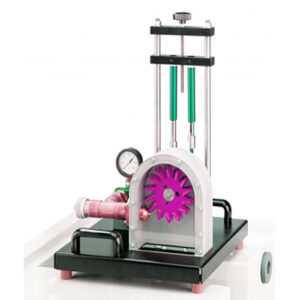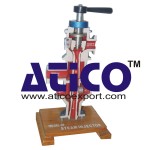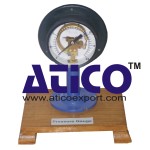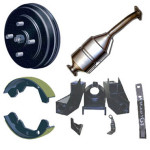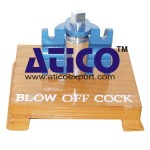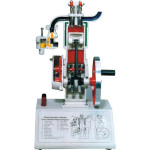Water turbines are turbomachines utilising water power. The Pelton turbine is a type of impulse turbine; such turbines convert the pressure energy of water into kinetic energy entirely in the distributor. During the conversion, the water jet is accelerated in a nozzle and directed onto the blades of the Pelton wheel tangentially. The water jet is redirected by approximately 180° in the blades. The impulse of the water jet is transmitted to the Pelton wheel.
It is a model of a Pelton turbine demonstrating the function of an impulse turbine.
The experimental unit consists of the Pelton wheel, a needle nozzle used as distributor, a band brake for loading the turbine and a housing with a transparent front panel. The transparent cover enables to observe the water flow, the Pelton wheel and the nozzle during operation. The nozzle cross-section and thus the flow rate are modified by adjusting the nozzle needle.
Learning Objectives And Experiments
- Design and function of a Pelton turbine
- Determination of torque, power and efficiency
- Graphical representation of characteristic curves for torque, power and efficiency
Specification
- Function of a Pelton turbine
- Transparent front panel for observing the operating area
- Loading the turbine by use of the band brake
- Adjustable nozzle needle for setting different nozzle cross-sections
- Marking on brake drum for non-contact speed measurement
- Instruments: spring balances for determining the torque, manometer shows pressure at turbine inlet
- Flow rate determination by base module
- Water supply using base module or via laboratory supply
Technical data
- Pelton Turbine
- Output: 5W At 500min-1, Approx. 30L/Min, H=2m
- Pelton Wheel
- 14 Blades
- Blade Width: 33,5mm
- External Ø: 132mm
- Needle Nozzle
- Jet Diameter: 10mm
- Measuring Ranges
- Force: 2x 0…10N
- Pressure: 0…1bar

